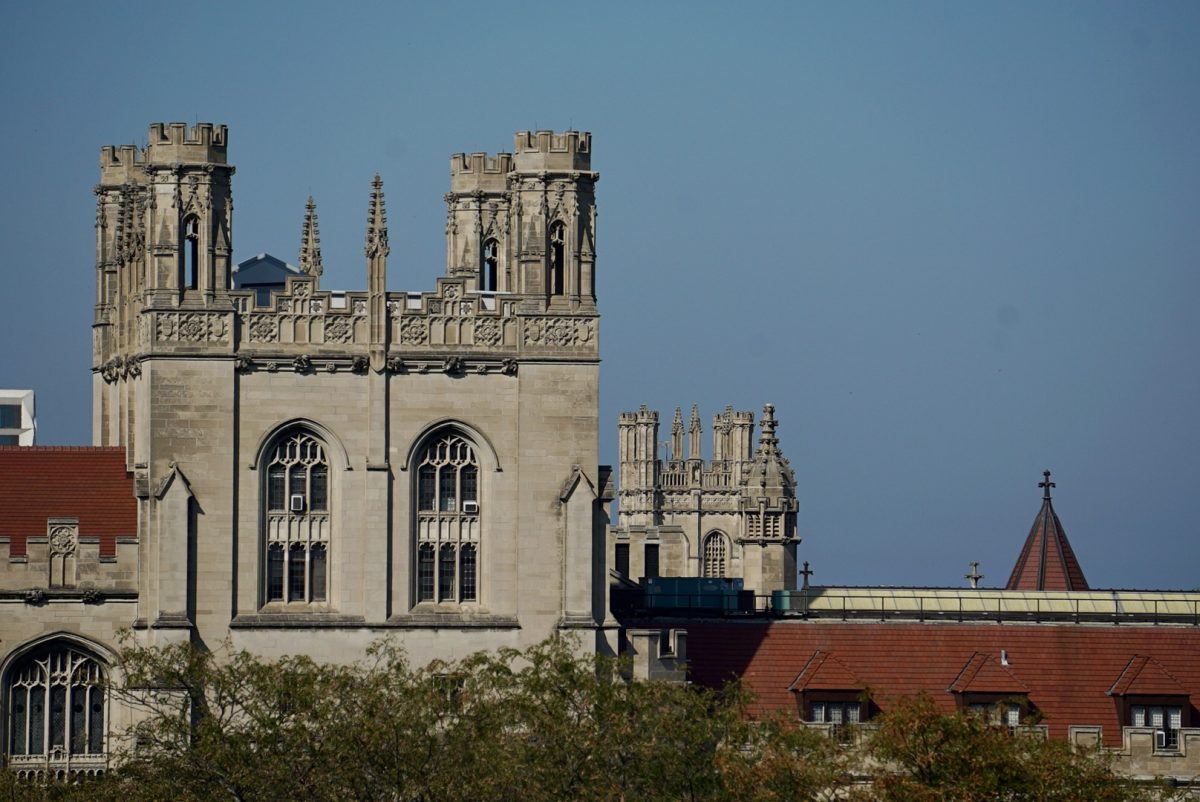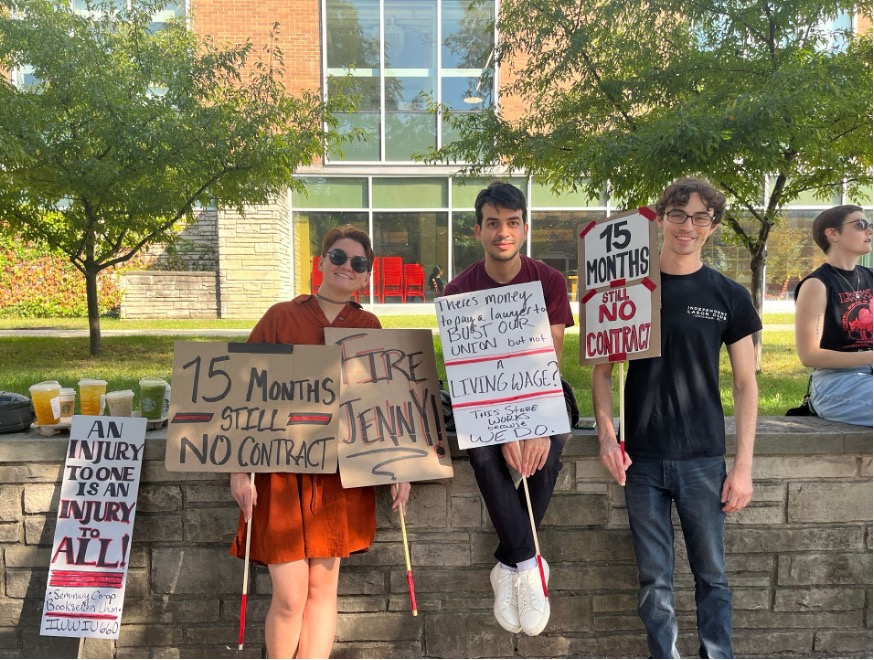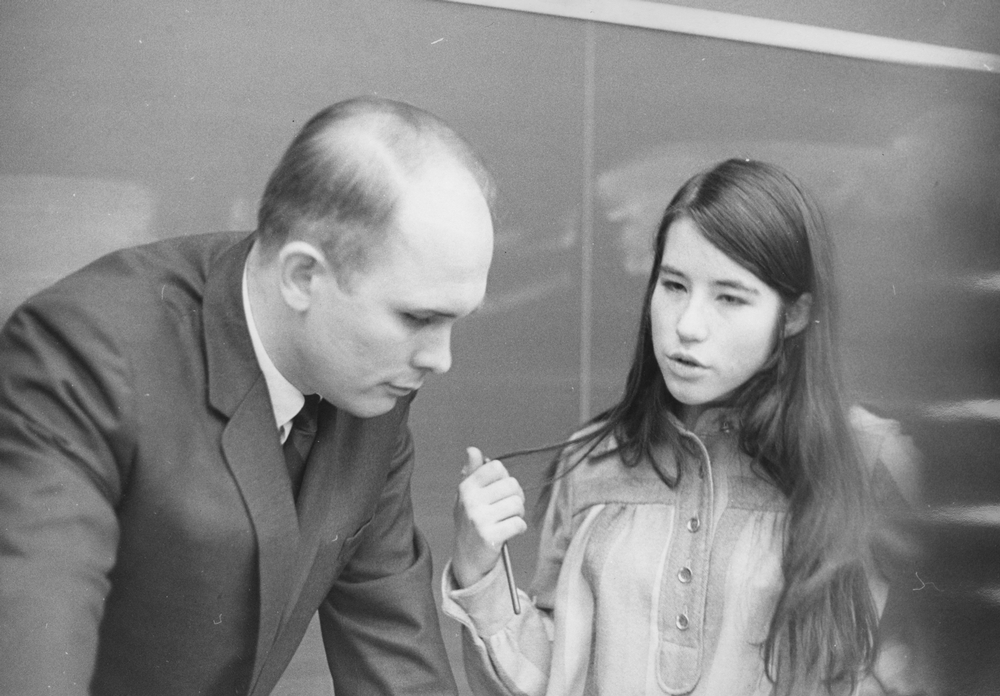“Conserve Energy, turn out the lights,” read a sticker on the second floor of the administration building. “Energy cannot be created or destroyed,” someone scrawled below it, paraphrasing the first law of thermal dynamics. Strictly speaking, the erudite vandal was correct; however, the best way to harness this finite supply of energy has been a matter of intense debate.
While the Bush administration’s energy plan calls for intensified exploration and extraction of fossil fuel reserves, environmentalists warn that reliance on these scarce and heavily polluting energy sources poses an unacceptable threat to the natural world.
Here at the University of Chicago, a place where an admonishment to conserve energy is rebutted by a semantic argument of theoretical physics, the real-world energy policy debates have been joined by a group of students who believe they have found a practical, nonpolluting alternative to coal and nuclear power. Green Campus Initiative (GCI), a Recognized Student Organization (RSO), has submitted a proposal to the University recommending that it purchase a portion of its power from a soon-to-be constructed wind farm, while mitigating the higher costs of wind power by improving the energy efficiency of campus buildings.
The wind-generated juice that GCI wants the University to purchase will begin flowing pending completion of Illinois’s first wind-farm: The Crescent Ridge Windpower Project. Consisting of 34 planned state-of-the-art wind turbines covering 2,200 acres and straddling two townships in Southern Illinois, Crescent Ridge is an undertaking of Community Energy Incorporated (CEI), a leading East Coast supplier of wind power.
These aren’t your grandpa’s windmills: Upon completion, each behemoth wind turbine at Crescent Ridge will tower approximately 380 feet above the surrounding prairie, and massive blades stretching 237 feet in diameter will generate 1.5 megawatts (MWs) of energy per turbine, for an aggregate total of 51 MWs enough energy to supply the electrical needs of 18,000 average Illinois households, according to CEI.
In a state where 99.3% of electricity generators run on coal, including several plants that do not meet current EPA standards, wind power proponents believe the introduction of clean, renewable energy sources is long overdue. While Chicago itself receives 67% of its power from nuclear fission, the particulate pollutants of down-state, coal-fired plants which are driven towards the city by prevailing winds, account for a premature death rate that has been conservatively estimated at 140 per year, but which ranges as high as 995, according to the American Heart and Lung Association of Metropolitan Chicago. By contrast, wind power generates no particulate air pollution and shifting reliance from coal to a wind facility on the scale of Crescent Ridge would avoid the emission of several hundred thousand tons of green house gasses. Crescent Ridge is even safe for migratory birds.
The catch: wind power is currently more expensive than coal or nuclear power. The cost differential between wind power and other sources of power depends on the scale and duration of the contract. However, CEI’s preliminary estimate to the University of Chicago predicted a cost increase from $60,000 per year (+0.6%), were wind power to account for 2.8% of total energy consumption, all the way up to a $2,253,289 increase (+22.9%) for a total wind power replacement under the terms of a three-year contract.
Because of the significant short-term costs of wind power, suppliers’ largest clients have been universities: institutions with capital to invest and the desire for the positive publicity that attends the purchase of wind power. Schools like Harvard, the University of Pennsylvania, Penn State, and Carnegie Mellon have all begun to purchase wind power within the past five years. When members of GCI learned of the Crescent Ridge plans, they figured the U of C may follow suit.
According to an agreement between CEI and Commonwealth Edison, the latter will purchase the output of the Crescent Ridge facility, allocating it through its grid, which includes the U of C. With the planned Crescent Ridge facility creating the possibility of wind power purchase, GCI set to work convincing the University that such a move constituted a wise investment, despite the heightened short-term costs.
To this end, GCI drafted a two-pronged proposal. The report calls on the University to purchase 20% of its power from wind generators by 2006, although GCI members stressed that this amount was an ideal figure and that “any amount would be better than nothing,” as third-year in the College and GCI member Chelsea Souter said. The second part of GCI’s proposal recommends that the University improve the energy efficiency of its buildings to cover the increased costs of wind power consumption.
GCI estimated the University’s annual electricity expenditure at $13 million, a cost that could easily be decreased by $600,000 per year through the replacement of aging and broken equipment and improvements to insulation, according to the group’s proposal.
Auditing University buildings for energy efficiency is not a new idea in and of itself. According to Bob Griffith, director of energy management and special projects for Facilities Services, his department already undertakes such activities, funds permitting. The novelty of the GCI proposal lies in its suggestion that the University make use of newly established city grants to conduct 120 building audits over five years.
These city grants are part of a comprehensive regional effort to improve energy efficiency while reinvesting these savings in renewable energy sources. On the heels of severe blackouts in the summer of 1999, Mayor Daley unveiled the Chicagoland energy plan two years ago. Under its terms, the Chicago city government, along with dozens of suburban municipalities, flexed their collective consumer muscle and demanded that ComEd meet 20% of their power needs with renewable sources by 2010–a move that will make the city of Chicago the largest single consumer of renewable energy in the country. This decision has created a flurry of construction, both on wind power facilities like Crescent Ridge, as well as on methane gas-powered generators.
Similar to the GCI proposal, Chicago’s energy plan argues that long-term benefits of cleaner air, savings resulting from increased efficiency, and the creation of jobs spurred by the construction of new facilities will more than make up for the short-term outlays of cash required to implement the energy plan.
GCI members applauded the city’s efforts to use renewable resources but tempered their praise with criticism. According to third-year in the College Justin Rolfe-Redding, while sources like methane gas may be renewable (the gas is released by landfills), they still have harmful emissions. Moreover, both Rolfe-Redding and Souter criticized the Daley administration for their failure to enforce EPA standards on coal power plants in the area, which were built prior to current codes and may remain in operation under a grandfather clause. “[Daley] will put trees on the tops of office buildings,” she said, referring to one facet of the Chicago Energy proposal, “but he won’t clean up the dirty power plants.”
Reservations aside, though, GCI jumped at the chance to utilize the newly created energy audit grants, contacting the city for application information. The results of this inquiry were included in the GCI proposal, which was delivered to Facilities Services, a branch of the University administration with which GCI has enjoyed a close relationship throughout the past year. “Our efforts in all this have been very collaborative,” Rolfe- Reading said.
Facilities Services shared this sentiment. “We’ve always taken input from many different groups on campus,” Griffith said. “We welcome it.”
According to Griffith, Facilities Services has contacted the city and initiated the grant proposal process, but has not yet passed the initial discussion phase and are a long way from finalizing any agreement. CEI submitted a final proposal to the University three weeks ago, and it is currently under review.
GCI–which revolves around a nucleus consisting of Rolfe-Redding, Souter, third-years in the College Katie Parsons and Sapna Thottathil, and fourth-year in the College Wade Murphy–hopes that the adoption of its proposal will only be the beginning.
“Hopefully after the University sees the savings that will come with improved efficiency, they’ll decide to reinvest in wind power,” Rolf-Redding said.
In turn, GCI argues that such reinvestment will help push the cost in wind power down, as technologies improve and availability and competition expand to meet the increased demand.








